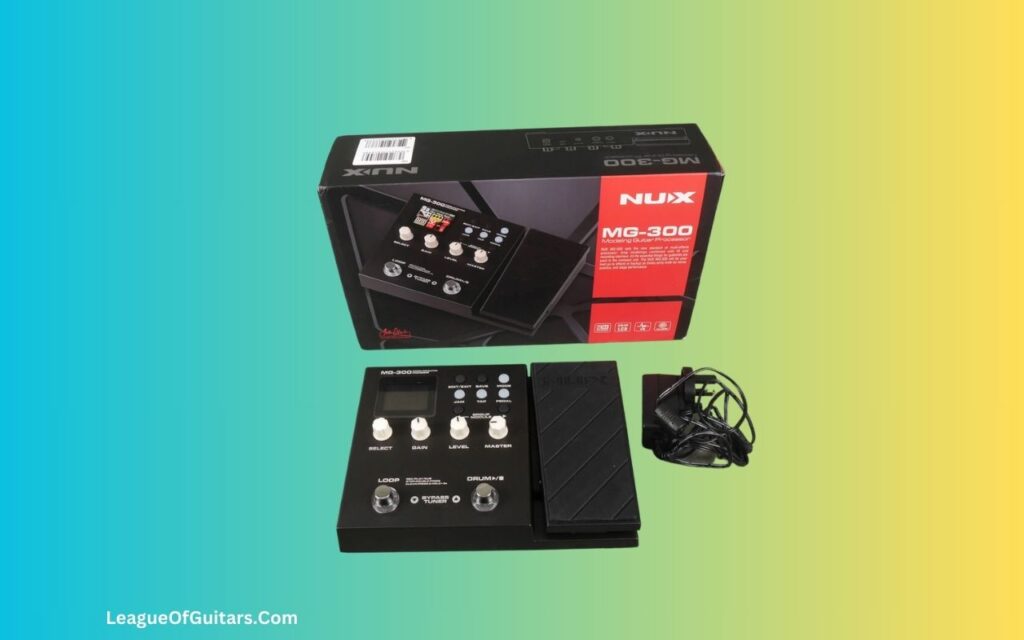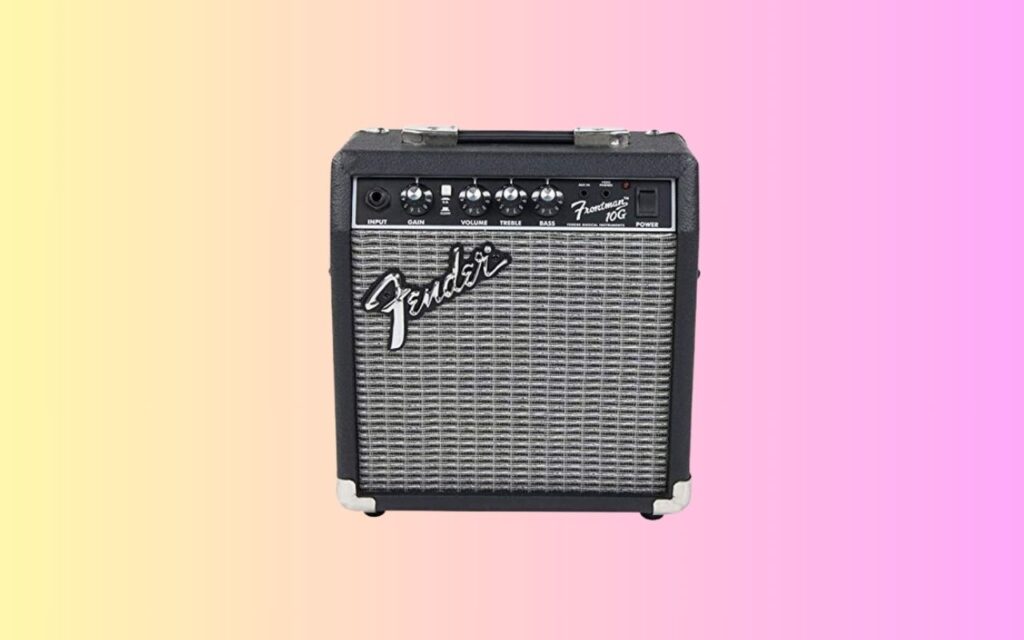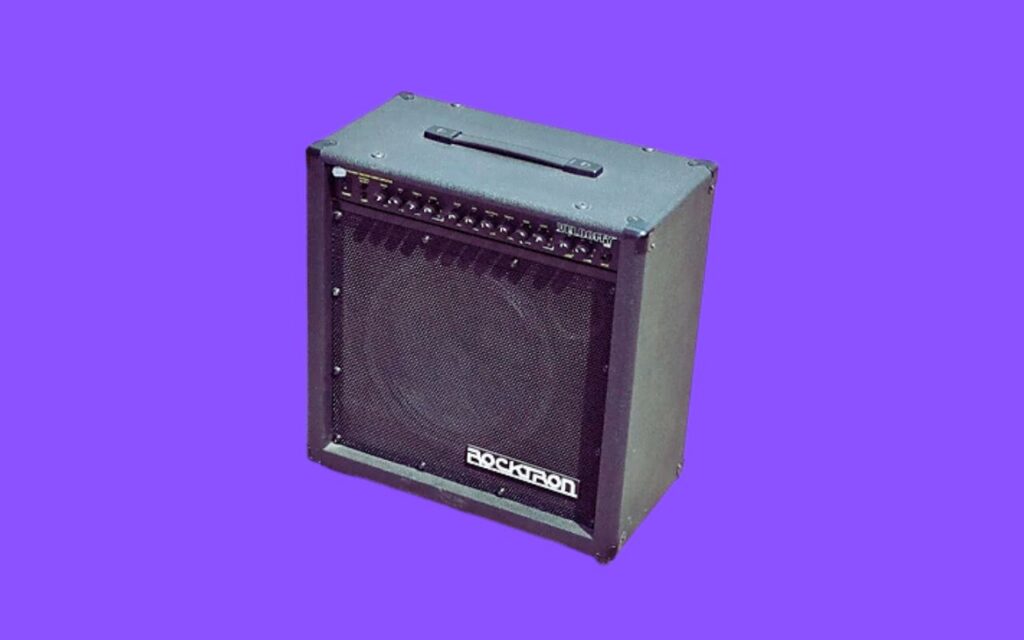In the realm of guitar effects, versatility reigns supreme.
Guitarists crave the ability to sculpt their tone, explore diverse genres, and unleash their creativity, all while maintaining a portable and user-friendly setup.
Enter the Nux MG-300, a multi-effects processor that has taken the guitar world by storm with its impressive range of features, affordability, and ease of use.
This compact yet powerful device packs a punch, delivering a vast array of amp models, effects, a looper, and a drum machine, all wrapped up in an intuitive interface that makes tweaking your sound a breeze.
In this comprehensive review of the Nux MG-300, we’ll delve into the depths of this pedal, uncovering its strengths, exploring its capabilities, and providing insights to help you decide if this multi-effects marvel is the right choice for your sonic adventures.
Nux MG-300
Summary
Before we begin with the full review, let us understand what to look for in a Good Budget Guitar Multi-Effects Pedal.
Looking for a budget amplifier? Check out our Review of the Fender Frontman 10G.
What To Look For in a Budget Multi-Effects Pedal
The below table summarizes what to look for in a budget multi-effects pedal. If a pedal checks all of the features below, then most definitely, it is the best pedal for your needs.
| Feature | What To Look For |
|---|---|
| Amp Modeling | Variety of amp models for diverse tonal options |
| Effects Variety | Rich assortment of effects for versatile sound creation |
| Sound Quality | Natural, pleasing, and detailed sound effects |
| User-Friendliness | Intuitive controls, clear labeling, and organized interface |
| Additional Features | Built-in looper, expression pedal support, and USB connectivity |
| Durability | Solid construction, high-quality components, and sturdy enclosure |
| Value for Money | Best bang for your buck based on budget and priority features |
For me, The Nux MG-300 seems to check all of the above requirements to be worthy of recommendation to anyone who’s looking to buy a multi-effects pedal under $100 or roughly 10000 Indian rupees.
Nux MG-300 Review
I’ve divided the review into the below sections. Feel free to jump directly to any section you want by clicking the links below.
Let’s begin!
Unboxing, Design, and Specifications
Opening the NUX MG-300 is a vibrant experience with its bright red packaging.
The metal construction feels solid.
The unique footswitches intrigued me, and as I explored the front and back panels, the overall build quality impressed me.
The expression pedal on the NUX MG-300 feels usable and has a decent size with a rubber grip on top.

As I explored the NUX MG-300, the layout of buttons and knobs became apparent.
On the front panel, there are two footswitches—one for the loop and another for drum start/stop. They can be pressed simultaneously for tuner access.
Knobs include gain, level, and master, with buttons for switching modules, a jam button, a tap button, a pedal button, a mode button, a save button, and an edit/exit button.
Moving to the back, there’s is a quarter-inch input and output, likely stereo output with a 3.5mm auxiliary input and a USB connector.
The placement and functionality of each element contribute to the overall user-friendly design.
| Front Panel | Back Panel |
|---|---|
| Two footswitches (loop and drum) | Quarter-inch input |
| Selection knob | Quarter-inch output (likely stereo) |
| Gain, Level, and Master knobs | 3.5mm auxiliary in |
| Module switching buttons | USB connector |
| Jam, Tap, Pedal, Mode, Save, Edit/Exit | Power Input (DC 9V) |

After unboxing the NUX MG-300, I did run into a few issues.
The expression pedal calibration was off, and there was an overall glitchiness.
Frustratingly, the manual didn’t cover calibration. It turns out a firmware update was needed, which solved the problems.
Lesson learned: Always update your devices right after unboxing
The below table summarizes the pedal’s specifications.
| Feature | Specification |
|---|---|
| Tone Editing Software | Quick Tone™ Edit Software for patch selection and tweaking |
| Sound Expansion | Load 3rd-party IRs for extended sound capabilities |
| Recording Interface | USB audio stream for recording with routing setup |
| Rhythm and Beats | 56 drum beats, 60s Phrase Loop Synchronization |
| Equalization | Global 3 bands EQ for quick adjustments in live applications |
| Pre-Effects Algorithm | TSAC-HD Pre-Effects |
| Amp Modeling Algorithm | CORE-IMAGE Post-Effects sound library |
| USB Audio Streaming | Yes (Recording interface with re-amp function) |
| Expression Pedal | Yes (for volume or effects control) |
| Power Requirement | 9 Volts, 300 Milliamps |
| Firmware Update | Available on the official website |
| Dimensions | 24.89 x 36.32 x 8.13 cm |
| Weight | 912 grams |
| Manufacturer | Cherub Technology Co., Ltd. |
Stay tuned for the full review below as I dive into its features and sound capabilities.
NUX MG-300 Features
Amp Modeling:
Whether you’re seeking the warm, clean tones of a Fender Deluxe Reverb or the raw, bluesy growl of a Marshall Plexi, the Nux MG-300’s amp models faithfully capture the essence of these iconic amplifiers.
Each model is meticulously crafted to deliver the authentic feel, dynamics, and harmonic richness of its real-world counterpart.
Below are the amp models that can be found on the MG-300.
| Amp Model | Label |
|---|---|
| Roland JC-120 | JAZZ CLEAN |
| 64 Fender Deluxe Reverb | DELUXE RVB |
| 59 Fender Bassman | BASS MATE |
| 57 Fender Tweed Deluxe | TWEEDY |
| 65 Fender Twin Reverb | TWIN RVB |
| 1969 HIWATT | HIWIRE |
| 1978 Mesa Boogie MK1 | CALI CRUNCH |
| VOX AC15 | CLASS A 15 |
| VOX AC30 | CLASS A 30 |
| 68 Marshall Plexi 100W | PLEXI 100W |
| 67 Marshall Plexi 45W | PLEXI 45 |
| 1977 Marshall JCM800 | BRIT 800 |
| 1989 Marshall 1987X 50W | 1987X 50W |
| 1980 Soldano SLO 100 | SLO 100 |
| 2005 Friedman HBE | FIREMAN |
| 1985 Mesa Dual Rectifier | DUAL RECT |
| 1999 DEIZEL VH4 | DIE VH4 |
| 1990 Fender Vibro King | VIBRO KING |
| BUDDA | BUDDA |
| 2001 DR Z MAZ 38 | MR Z 38 |
| 2008 Fender Supersonic | SUPER RVB |
| 1967 Marshall JTM45 | BRIT BLUES |
| 1986 Matchless DC30 | MATCH D30 |
| Marshall JTM2000 | BRIT 2000 |
| Bognar Uberschall | UBER HIGAIN |
Effects:
The below table summarizes all of the effects available on the MG-300.
| Effect | Label |
|---|---|
| ROLAND CE-1 CHORUS | CE-1 |
| BOSS CHORUS | CLASSIC CHORUS |
| MXR STEREO CHORUS | STEREO CHORUS |
| BOSS VB-2 Vibrato | VIBRATO |
| Stereo DETUNE | DETUNE |
| BOSS BF-2 Flanger | FLANGE |
| MXR PHASE 90 | PH 90 |
| MXR PHASE 100 | PHASE 100 |
| TC CHORUS | CHORUS+ |
| DUNLOP UNIVIBE | U-VIBE |
| BOSS TR-3 TREMOLO | TREM |
| ROTARY SPEAKER | RTY SPK |
| MXR HARMONIZER | HARMONY |
| Boss DM-2 Analog Delay | ANALOG DELAY |
| Boss DD-2 Digital Delay | DIGI DELAY |
| Ibanez DML Modulation Delay | MOD DELAY |
| Maestro EchoPlex EP-4 | TAPE ECHO |
| Boss DD8 Reverse Delay | REVERSE DELAY |
| Ibanez DPL10 Stereo Pan Delay | PAN DELAY |
| Lexicon 224 Hall Reverb | HALL |
| EMT 140 Plate Reverb | PLATE |
| Vintage Spring Reverb | SPRING |
| T-Rex Room Mate Reverb | ROOM |
Apart from the above amps and effects, the Nux MG-300 also features a variety of speaker cabinets such as:
ROLAND JC120
64 DELUXE REVERB
59 BASSMAN
57 DELUXE
65 TWIN REVERB
HIWATT FANE 412
…and many more
Sound Demo
You can hear the sound demo of the MG-300 in the video below.
I can say that the tones produced by this small machine are pretty close to the original amps. Some tones sound shockingly similar, some not so much.
But for the price that it retails for, the MG-300 definitely surprised me with its versatile tones and functionalities.
Additional Features
USB Connectivity:
The MG-300 offers USB audio stream capability, serving as a recording interface with a re-amp function.
You can connect the pedal to a computer and utilize the NUX QuickTone edit software for tweaking parameters, downloading patches, loading third-party Impulse Response (IR) files, and configuring USB audio-stream routing.
Nux officially recommends setting the I/O Buffer Size at 128 Samples for USB recording.
To connect the Nux MG-300 to your computer, simply follow these steps:
- Gather the necessary equipment:
You will need a USB A to Micro USB cable, which is typically included with the Nux MG-300. - Connect the cable:
Connect one end of the USB cable to the Micro USB port on the Nux MG-300 and the other end to a USB port on your computer. - Install drivers (if necessary):
Depending on your operating system, you may need to install additional drivers for the Nux MG-300 to be recognized by your computer. These drivers can usually be downloaded from the Nux website. - Launch QuickTone software:
Once the Nux MG-300 is connected and recognized by your computer, launch the Nux QuickTone software. The software will automatically detect the connected MG-300 and allow you to manage your patches and firmware updates.
Expression Pedal Control:
Assigning Parameters to the Expression Pedal
- Enter the Expression Menu:
Once the expression pedal is calibrated, you can assign various parameters to it for real-time control. To do this, press the “Home” button on the MG-300, scroll down to “Expression,” and press the “Enter” button. - Select the desired parameter:
In the Expression Menu, you can choose which parameter you want to control with the expression pedal. - Set the minimum and maximum values:
Once you have selected the parameter, you can set the minimum and maximum values that the expression pedal will control. This determines the range of the effect, such as the minimum and maximum volume levels or the range of the wah effect.
Using the Expression Pedal
With the expression pedal connected and assigned to a parameter, you can now control that parameter in real time by moving the expression pedal.
The Expression Pedal has multiple functions:
- WAH: Controls the WAH filter.
- EFX: Controls the GAIN (DRIVE) parameter of OD/DIST or the PITCH parameter of PITCH BENDER.
- AMP: Controls the LEVEL parameter of AMP.
- MOD: Controls the MIX level of Modulation effects.
- DLY: Controls the MIX level of Delay effects.
- RVB: Controls the MIX level of Reverb effects.
Detailed instructions on how to assign functions and calibrate the pedal are available in the User Manual.
Drums & Looper
- Drum Functionality:
- The MG-300 includes 56 built-in drum beats, offering a variety of rhythm styles to complement different musical genres.
- Each rhythm style has 7 different beats, providing flexibility for different musical contexts and playing styles.
- Looping Functionality:
- The pedal supports NUX Phrase Loop Synchronization with Rhythm, integrating drum beats with loop recording functionality.
- You can create loops by playing a phrase, and the MG-300 will automatically amend the loop to fit the current rhythm BPM (Beats Per Minute).
- The pedal offers a 60-second phrase loop recording time, allowing for extended and intricate loop compositions.
- Integration of Drums and Loops:
- The integration of drum beats with loop recording enables solo guitarists to create more dynamic and rhythmically rich performances.
- Guitarists can experiment with different drum patterns and looped phrases, enhancing the overall musical experience.
- Versatility for Live Performances:
- The combination of drum beats and looping makes the MG-300 well-suited for live performances, allowing solo performers to create a fuller and more engaging sound without the need for additional musicians.
External Amp and Cab Simulation:
How to Connect NuX MG-300 to External Amp
Understand the Modes:
The NuX MG-300 features a Mode switch for versatile connectivity. You can choose between Combo or Stack and Front End or Effects Return.
Selecting Modes:
| Mode | Description |
|---|---|
| Studio Direct | Ideal for using the MG-300 as an audio interface or connecting directly to a mixer. |
| Combo Front | Turns off the cab, providing a clean and focused signal when connected to the front of a combo amp. |
| Combo Rear | Reactivates the cab when connected through the effects return, allowing for tailored adjustments. |
Connection Steps:
Front of Combo Amp:
- Set Mode to Combo Front.
- Connect the MG-300 to the front input of the combo amp.
- Adjust settings for a clean and focused signal.
Effects Return of Combo or Stack:
- Set Mode to Combo Rear.
- Connect the MG-300 to the effects return input of the amp.
- Reactivate the cab and make additional adjustments as needed.
Additional Tips:
- Experiment with EQ settings to tailor the sound further.
- Consider adjusting reverb settings based on your preference
Pros and Cons
Pros
- A diverse range of amp models
- High-quality emulations
- Custom IR loading for a personalized tone
- Professional sound customization
- A broad selection of high-quality effects
- Satisfying emulations of classic pedals
- Impressive high-gain distortion
- Rich and powerful tones
Cons
- Plasticky build
- Limited controls on the front panel
- Minimal onboard EQ adjustments
- No MIDI capability
- Limited I/O options for advanced setups
- Plastic housing may raise durability concerns
- Limited on-board controls for effect tweaking
- Limited EQ adjustments for fine-tuning
Final Words
Despite its plastic build and minimal controls, the NuX MG-300 stands out for its sound quality, offering a practical and valuable tool for recording, gigging, and practice.
The competitive price of $170 (Rs. 10000) makes it an attractive option, providing excellent value for the diverse tones and features it delivers.
It is a worthwhile investment and I’d definitely recommend it to anyone looking for great tones on a budget.
FAQs
How do I update the firmware on my NUX MG-300?
Refer to the official NUX website and download the latest firmware for your MG-300. Follow the provided instructions in the firmware update guide to ensure a smooth update process.
Can I use third-party Impulse Response (IR) files with the MG-300?
Yes, the MG-300 supports third-party IR files. Use the NUX QuickTone edit software to load 3rd party IRs, expanding your sound options beyond the built-in cabinet simulations.
What is the purpose of the Expression Pedal on the MG-300?
The Expression Pedal on the MG-300 serves various functions, including controlling parameters such as WAH filter, GAIN (DRIVE), PITCH, LEVEL, MIX for modulation, delay, and reverb effects. Refer to the user manual for detailed instructions on calibration and assignment.
How can I connect the MG-300 to my computer for recording purposes?
Utilize the USB audio stream feature on the MG-300, and connect it to your computer using a USB cable. Use the NUX QuickTone edit software for tweaking parameters, downloading patches, and configuring USB audio-stream routing.
What drum and looping features does the MG-300 offer?
The MG-300 provides 56 built-in drum beats with 7 different beats per rhythm style. It also supports Phrase Loop Synchronization with Rhythm, offering a 60-second phrase loop recording time for creating dynamic and rhythmically rich performances.
How can I bypass the internal amp and cabinet simulations on the MG-300?
Enter the settings or menu on the MG-300 related to amp and cabinet modeling. Disable or bypass the internal simulations to connect the pedal directly to an external amplifier and cabinet.
What EQ adjustments can I make on the MG-300?
The MG-300 features a global 3-band EQ for quick adjustments in live applications. You can tweak parameters like bass, midrange, and treble to shape your tone according to your preferences.
Are there collaboration patches available for the MG-300 in the China Mainland Exclusive version?
No, according to the information provided, there are no collaboration patches in the China Mainland Exclusive version of the MG-300.
Can I use the MG-300 in conjunction with other pedals in my setup?
Yes, the MG-300 can be integrated into your pedalboard setup. Experiment with the order of pedals to achieve different tones and effects.
What are the bass cab IRs offered in the MG-300 V4 update?
The MG-300 V4 update introduces bass cab IRs including TRC410 based on the Trace Elliot 410 cabinet, DB810 based on the Aguilar DB810 cabinet, and SV810 based on the Ampeg SV810 cabinet.




can i use mg300 with normal power amp instead of guitar amp